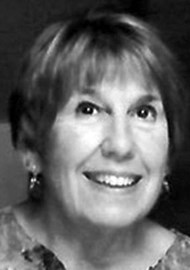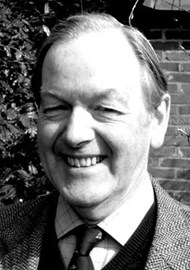Historian, sculptor and general polymath Neil Weir neatly demonstrates the strong links between our speciality and the creative arts, along with his colleague from the Medical Art Society, Jeanette Cayley.
At a summer meeting of the British Medical Association in 1934, a group of doctors, including the pioneering plastic surgeon Sir Harold Gillies and the physiologist Sir Leonard Hill, arranged their own art exhibition. They proposed forming a society for doctor-artists which they chose to call the Medical Art Society (MAS). The early exhibitions, which were often reported in the national press, were held in Bond Street galleries in London often followed by a dinner in the Café Royal.
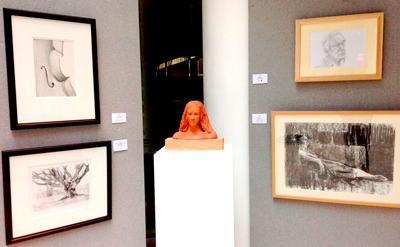
A corner of the MAS 2014 Annual Exhibition in the RSM Atrium.
During the Second World War the society was dormant but in 1947 activities were resumed including winter drawing classes and critiques by established artists. By 1951 the MAS had 108 members, (including 17 women, a fact which drew comment at the time). The society went through a lean financial period through the 1960s; the exhibitions moved from the no longer affordable West End galleries to Leighton House Art Gallery in Kensington. Although well attended the membership gradually reduced. At the end of the decade the exhibitions were held at Chandos House, just off Cavendish Square, that had recently been acquired by the Royal Society of Medicine (RSM). At this time the membership was widened to include dentists and veterinary surgeons and students of these professions.
“There is a growing recognition of the healing power of art and its value in hospitals.”
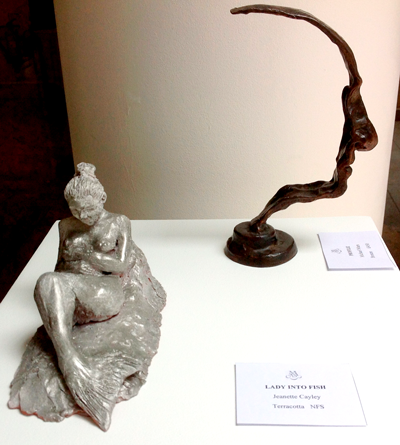
‘Lady into Fish’ by Jeanette Cayley.
In response to a new constitution and future plans for the society one member, the Baron ver Heyden de Lancey, a man who had qualified in medicine, dentistry and the law, believed that the society should be linked with the RSM and gave a legacy to try to ensure this. His generosity included in 1977 accepting the patronage of the MAS which he held until his death in 1984. He was succeeded by Sir Hugh Casson who was president of the Royal Academy. Since 2000 the position has been held by the famous artist Tom Coates.
Nowadays the MAS annual exhibition is held in the handsome atrium of the RSM. (The MAS is independent in its organisation and finances so its members are not bound to be members of the RSM.) The Baron’s legacy pays for two prizes, one for two-dimensional and one for three-dimensional work. Paintings, drawings, original prints and textile art, sculpture and carvings are all able to be shown.
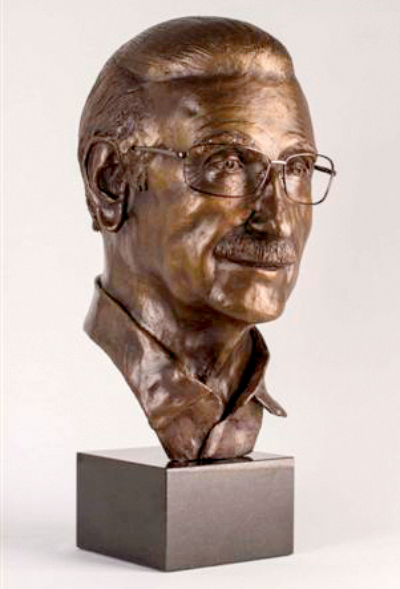
David Moffat by Neil Weir.
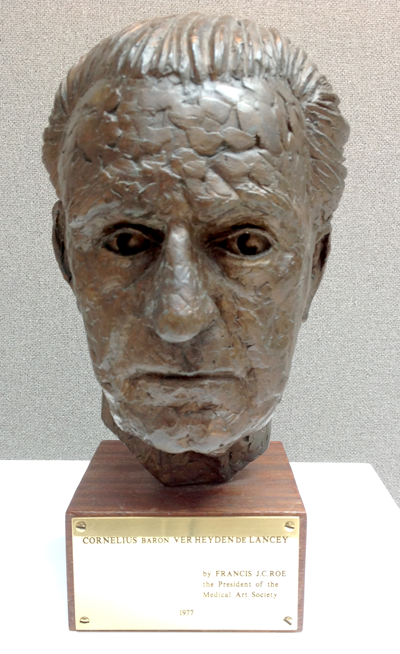
Cornelius Baron ver Heyden de Lancey, sculpted by the late Francis Roe.
As well as the annual exhibition, the Society acts as a forum for its members through its newsletters and website. Activities such as cultural outings, sketching days and holidays, clay modelling sessions and life drawing are held through the year.
There are close ties with a similar Dutch society Pincet en Penceel (‘Forceps and Pencil’). In 2018 the Society has entered a new phase of partnership as Hampstead School of Art now undertakes its administration. There is a growing recognition of the healing power of art and its value in hospitals. Increasingly, medical subjects inspire artists. Works by MAS members may not draw on these directly, but show considerable skill with form, line and colour.
A version of this article written by Jeanette Cayley first appeared in a recent issue of the RSM Retired Fellows’ Journal and is reproduced here with kind permission of the Editor.

